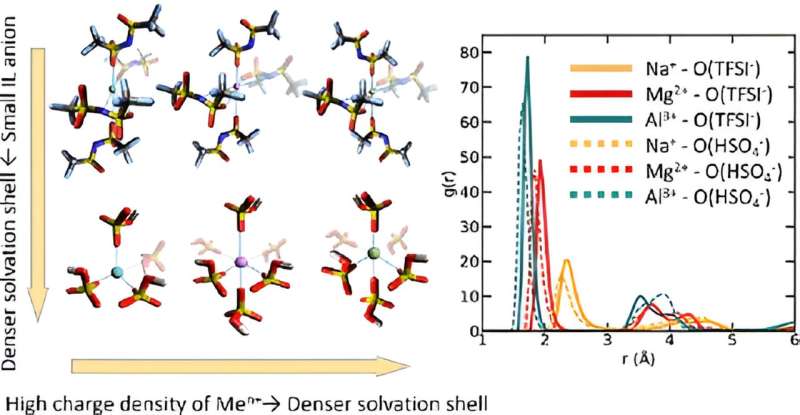This article has been reviewed according to Science X's editorial process and policies. Editors have highlighted the following attributes while ensuring the content's credibility:
fact-checked
peer-reviewed publication
trusted source
proofread
Potential solvents identified for building on the moon and Mars

Researchers have taken the first steps toward finding liquid solvents that may someday help extract critical building materials from lunar- and Martian-rock dust, an important part of making long-term space travel possible.
Using machine learning and computational modeling, Washington State University researchers have found about half a dozen good candidates for solvents that can extract materials on the moon and Mars usable in 3D printing. The work, reported in The Journal of Physical Chemistry B, is led by Soumik Banerjee, associate professor in WSU's School of Mechanical and Materials Engineering.
The powerful solvents, called ionic liquids, are salts that are in a liquid state.
"The machine learning work brought us down from the 20,000-foot to the 1,000-foot level," Banerjee said. "We were able to down select a lot of ionic liquids very quickly, and then we could also scientifically understand the most important factors that determine whether a solvent is able to dissolve the material or not."
As part of its Artemis mission, NASA, which funded Banerjee's work, wants to send humans back to the moon and then to deeper space to Mars and beyond. But to make such long-term missions possible, astronauts will have to use the materials and resources in those extraterrestrial environments, using 3D printing to make structures, tools, or parts from essential elements extracted from lunar or Martian soil.
"In situ resource utilization is a big deal over the next couple of decades for NASA," said Banerjee. "Otherwise, we would need a terribly high payload of materials to carry from Earth."
Acquiring those building materials must be done in an environmentally friendly and energy efficient way. The method to mine the elements also can't use water, which isn't available on the moon.
Ionic liquids, which Banerjee's group has been studying for more than a decade for use in batteries, could be the answer.
Testing each ionic liquid candidate in a lab is expensive and time consuming, however, so the researchers used machine learning and modeling at the level of atoms to narrow down hundreds of thousands of candidates. They looked for those that might digest lunar and Martian materials, extract important elements such as aluminum, magnesium, and iron, regenerate themselves, and perhaps produce oxygen or water as a byproduct to help provide life-support.
Identifying superior qualities that the solvents will need, the researchers were able to find about half a dozen very strong candidates. Important factors for success included the size of the molecular ions that make up the salts, its surface charge density, which is the charge per unit area of the ions, and the mobility of the ions in the liquids.
Working with researchers at the University of Colorado in a separate study published in the Journal of Molecular Liquids, the researchers tested a few ionic liquids in the lab for their ability to dissolve compounds. They hope to eventually build a lab-scale or pilot-scale reactor and test good candidate solvents with lunar regolith-type materials.
More information: Azmain F. Islam et al, Toward Metal Extraction from Regolith: Theoretical Investigation of the Solvation Structure and Dynamics of Metal Ions in Ionic Liquids, The Journal of Physical Chemistry B (2023). DOI: 10.1021/acs.jpcb.3c04057
F. Rexhepi et al, Metal oxide solvation with ionic liquids: A solubility parameter analysis, Journal of Molecular Liquids (2023). DOI: 10.1016/j.molliq.2023.122314
Journal information: Journal of Physical Chemistry B
Provided by Washington State University




















